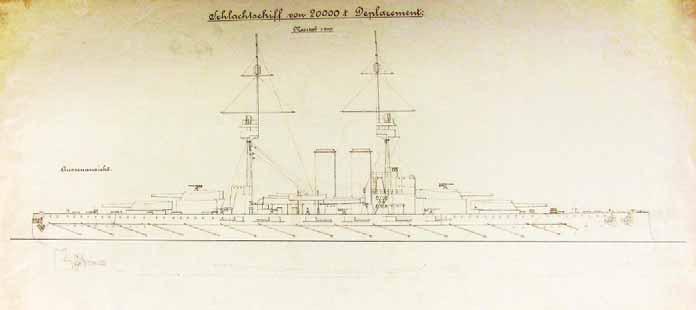epilogue
Íme, hát megleltem hazámat. a földet, ahol nevemet hibátlanul irják fölébem, ha eltemet, ki eltemet. E föld befogad, mint a persely. Mert nem kell (mily sajnálatos!) a háborúból visszamaradt húszfilléres, a vashatos. József Attila611 The year 1904 was a milestone in the history of the Austro-Hungarian Navy. Several important symbolic events occurred that year. The first was the extraordinary credit that was voted for the Navy. Thanks to this credit, for the first time in its history, the Navy’s budget exceeded ten percent of the armed force’s total budget. In September 1904, the Österreichische Flottenverein (Austrian Navy League) was established following the example of the successful German Flottenverein. Over the next ten years the membership of the Austrian Flottenverein increased by a thousand times. The strength of the Flottenverein was not only the dynamically growing number of members, but also in the advocacy capacity of the joining politicians and industrialists. Among the external factors the outbreak of the Russo-Japanese War had a decisive role. The successful Japanese raid on Port Arthur fundamentally questioned the Austro-Hungarian doctrine of “pure coastal defense,” and the reviving Italian threat was more imminent than since 1866. Last, but not least that is when the Navy decided to make a qualitative leap in battleship construction. This intention marked a break with the doctrine of “pure coastal defense.” The story told by this book also began in 1904. Design works were started in that year on the first “dreadnought” battleships which were officially designated as battleship (Schlachtschiff ) and which later became the Radetzky class. The next ten years were characterized by intensive development of the Austro-Hungarian fleet. During this period the Navy’s budget nearly tripled and the proportion of the naval budget’s share of the armed force’s to-
tal budget reached 25 percent. Between December 1906 and May 1914, the delegations voted the expenses of three battleship classes with a total value of 688.6 million Kronen. The total price of the seven battleships actually built was 360.4 million Kronen. The Austro-Hungarian Navy spent 891.6 million Kronen on ship construction, repair and naval artillery between 1900 and 1914, the price of the last two battleships classes totaled up to 40 percent of this amount. Already at the time of the construction of these battleships the question was raised: would the Dual Monarchy need these ships? Since the end of the World War I this question has been raised time and again. The other frequently asked question is: was the Austro-Hungarian fleet a “luxury fleet,” as Winston Churchill labeled the Imperial German Navy? The answers to these questions are not as obvious as many people may think. True, if one looks at the history of the war and at the role of the Austro-Hungarian capital ships which spent almost the entire war moored idly in their naval bases, one can easily come to the conclusion that building these battleships was a tremendous waste of money. However, it should be taken into account that the development of an army or a navy is determined by the experiences of the wars of the past and by the trends of the present, and not by the expectations of the future. It is unfair to call the Navy to account for not taking into account the experiences of 1914-1918 in 1911. In 1911, both past experiences and current trends suggested that the Dual Monarchy should build dreadnought battleships. Compared to the ideology and propaganda behind the German naval buildup, the reasons for the Austro-Hungarian fleet development were more realistic: the Italian threat to Austria-Hungary was much less imaginary than the British threat to Germany. The defining experience of the Austro-Hungarian Navy and the cornerstone of the naval thinking was the Battle of Lissa of 1866. The Austro-Hungarian Navy’s primary task was fighting a local war with the Italian Navy and in 1914 it would have had a much better chance against the
— 171 —






























